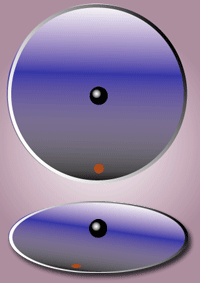
Photo from wikipedia
Limited fossil resources, daily increasing rate of demand for energy and the environmental pollution fact have made people revert to renewable sources of energy as a solution. One type of… Click to show full abstract
Limited fossil resources, daily increasing rate of demand for energy and the environmental pollution fact have made people revert to renewable sources of energy as a solution. One type of renewable energy is offshore wind energy which has high potential without any sound and visual noises. Recently, a lot of researchers have carried out on the issue of offshore wind turbine. Because of incapability of most of software programs to simulate gyroscopic effect of rotating rotors, in this articles a significant effort has been made to fabricate and test an offshore wind turbine under different rotor rotation velocities and different heading angle of wind so as to obtain the effects of these parameters on structure responses. Study on the response of a wind turbine under environmental loads has had a notable importance due to the fact that structure behavior can strongly affect procedure of modeling and optimizing wind turbine structures. On the other hand, frequency-domain structural response of a wind turbine can also make engineers be informed about of appropriate mooring system for a special environmental condition. Consequently, it has been observed that increasing the rotor rotation velocity leads the peak of spectrums shift to a higher frequency due to the gyroscopic effect appeared as a damping term, and changing heading angle of wind may lead to a change in heave and pitch amplitudes in the time domain response, and heave, sway and surge motion in frequency response.
Journal Title: International Journal of Environmental Science and Technology
Year Published: 2017
Link to full text (if available)
Share on Social Media: Sign Up to like & get
recommendations!